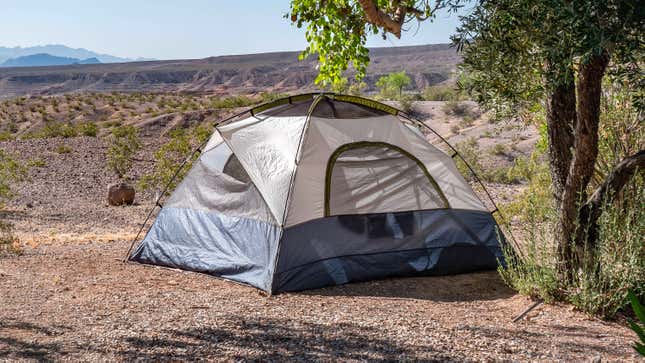
With summers now warmer than ever, enjoying the great outdoors inside a stiflingly hot tent is becoming less appealing than a vacation spent relaxing in an air-conditioned hotel room. That could soon change, however, as a University of Connecticut researcher has created a new fabric that could potentially cool the inside of a tent by up to 20 degrees Fahrenheit.
The fabrics currently used to make tents are engineered to block out winds and water to help keep their inhabitants dry and comfortable, but they tend to work both ways, preventing hot air inside the tent from escaping. That’s great when temperatures dip in the evening, but even with plenty of ventilation, on a hot Summer’s day, the inside of a tent can feel sweltering.
You can always pack a portable air conditioner to drop the temperature inside your tent, but those require one ingredient that’s often in short supply at rural campsites: electricity. A solar panel simply isn’t going to generate enough power to keep a portable AC unit, or even a simple fan, running indefinitely, and you don’t want to have to carry a backpack full of batteries.
Inspired by how, “plants wick water from the ground and then sweat to cool themselves,” Al Kasani, a researcher at the University of Connecticut’s Center For Clean Energy Engineering, created a self-cooling tent fabric. It remains thin and light so a tent can still be easily packed down, but the fabric has been enhanced with titanium nanoparticles that pull water from reservoirs located at the base of a tent and spread it across the fabric’s surface, where it evaporates and creates a cooling effect that drops the temperature inside the tent by up to 20 degrees F.
Kasani estimates that just a gallon of water can keep a tent cool for up to 24 hours, and the effect will work with either water sourced from a faucet at a campsite or pulled from a stream in a more rural setting. In other words, the evaporative cooling isn’t going to stop working if you don’t use purified clean water.
Although it’s going to be a while before we see this upgraded fabric showing up in camping gear—the material is still in the research phases—according to the university, “industry interest in Kasani’s technology has been high,” and in a few years, if it goes mainstream, it could help make roughing it in high temperatures feel not so rough.